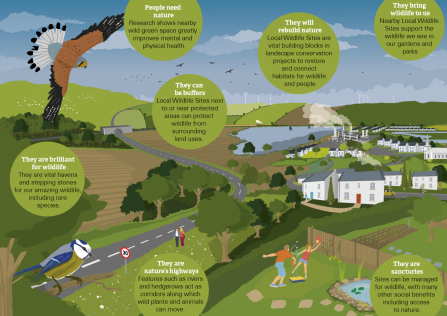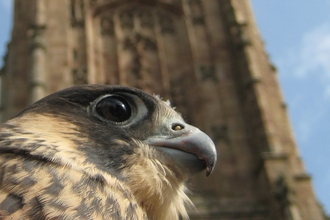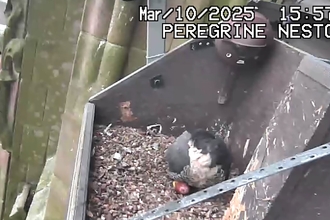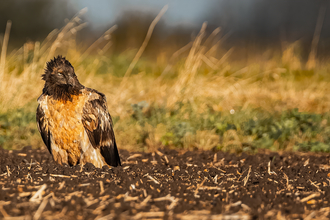Greater stitchwort, Kieron Huston
Every acre is a home for wildlife
What are Local Wildlife Sites?
Local Wildlife Sites are identified and selected locally using robust, scientifically-determined criteria and detailed ecological surveys. As a result, these special and often secret spaces have a huge part to play in the natural green fabric of Derbyshire's towns and countryside. They make up a web of stepping stones and corridors for wildlife, forming key components of ecological networks and our Living Landscapes.
Why do Local Wildlife Sites matter?

Why do Local Wildlife Sites matter?
Local Wildlife Sites are exceptional areas of land and some of our most valuable wildlife areas.
How Local Wildlife Sites came about
Local Wildlife Sites (LWS) and their equivalents in other counties emerged in the early 1980's as a means of trying to protect wildlife and their habitats from damaging developments and to help prioritise advice and raise awareness amongst landowners and the general public.
Unlike Sites of Special Scientific Interest (SSSI's), which are legally protected by statute, Local Wildlife Sites are a non-statutory designation applied at a county level using locally developed criteria.
Derbyshire was one of the first places to develop a comprehensive Local Wildlife Sites system and Derbyshire Wildlife Trust together with Derbyshire County Council and the Nature Conservancy Council (now Natural England) were at the forefront of this initiative.
Today we continue to be responsible for maintaining and developing the Local Wildlife Sites system on behalf of all of Derbyshire’s Local Planning Authorities and in accordance with Defra guidelines.
How many Local Wildlife Sites are there in Derbyshire?
There are currently 1,179 Local Wildlife Sites covering almost 10,000 hectares of land and water in Derbyshire (outside of the Peak District National Park).
The sites help to protect many important woodlands (including nearly all of the ancient woodland), flower rich grasslands, swamps, reedbeds, mires, reservoirs, lakes and ponds, habitat mosaics and veteran trees and hedgerows.
Local Wildlife Sites are a treasure trove of species and are particularly valuable for woodland and wetland birds, grass snake, common toad, great crested newt, water vole, brown hare, badger, various species of bats, many butterflies and a host of other insects, In fact there are records for over 5,000 species found within these sites and this is figure is growing all the time as we and our volunteers undertake new surveys.
The Local Wildlife Site system makes changes on an annual basis and both adds new sites and removes old sites that no longer qualify. There are over 400 potential Local Wildlife Sites in Derbyshire and each year a few of these are surveyed and subsequently designated.
How are Local Wildlife Sites protected?
Local Wildlife Sites are protected through planning policies set out within Local Plans and Core Strategies and the Government has provided guidance to Local Planning Authorities within the National Planning Policy Framework (DCLG, 2012).
The Natural Environment and Rural Communities Act 2007 together with the ODPM Government circular 06/2005 Biodiversity and Geological Conservation – Statutory Obligations and their Impact within the Planning System also add further weight to the protection of these sites.
Other legislation that can be relevant includes the Environmental Impact Assessment Regulations for uncultivated and semi-natural land (2006), the Wildlife & Countryside Act 1981 (as amended) and the Countryside and Rights of Way Act 2000. All of these can provide additional protection which can be relevant to Local Wildlife Sites.
Who owns Local Wildlife Sites?
Most Local Wildlife Sites (around 80%) are in private ownership including many sites on farms and estates and some owned by businesses.
Local Authorities, utility companies and non-governmental organisations such as Derbyshire Wildlife Trust, National Trust and Woodland Trust own around 20%.
Are Derbyshire's Local Wildlife Sites being positively managed?
An estimated 41% of Local Wildlife Sites (around 488 sites) are thought to be managed positively and are therefore considered to be in a favourable condition (Derbyshire Wildlife Trust, 2017). Many of these are owned by public bodies or environmental NGOs, but there are a significant number of sites (100+) that are managed within land management grant systems and many of these are private.
Of greater concern around 20 - 25% of Local Wildlife Sitess (over 220 sites) are declining due to neglect, poor management, development and recreational pressures and pollution. These sites are often species rich wetlands, grasslands and brownfield habitats, but they are challenging to manage and protect.
What threats do Local Wildlife Sites face?
Between 1984 and 2007 around 130 sites were destroyed and another 63 sites were damaged. The causes of this decline included some loss to development, infilling of ponds, recreational pressure, tipping, intensive agricultural and forestry management and neglect leading to scrub and bramble encroachment.
Continued...
We are aware of around 90 sites threatened to some extent by development. This includes numerous brownfield sites (that are now of high biodiversity value) and 14 sites that lie directly along the route of HS2. Land-use change remains challenging with agricultural intensification and horse grazing threatening some sites. Lack of management is also a problem for some sites. Many landowners of Local Wildlife Sites are part of an older generation that have continued to manage the land in a more traditional manner, but as land is passed onto the next generation these practices are being replaced by more intensive ones.
Why should we be concerned?
The UK State of Nature (Haywood et al, 2016) report found that between 1970 and 2013, 56% of species declined, with 40% showing strong or moderate declines. There have also been significant declines for many semi-natural habitats.
Local Wildlife Sites are at the frontline in terms of whether or not these declines can be halted. They are vital to maintaining the present range and abundance of our wildlife, but if we wish them to provide an effective means of protecting our wildlife for the future we need to ensure that they are in a favourable condition and wherever possible under sympathetic management.
Many sites require some management in order to maintain the particular habitats found within them. Sites that are declining may not be able to support the diversity of species that they did 10 years ago and can eventually be lost entirely.
Local Wildlife Sites are integral to our strategies for conserving wildlife in the wider countryside and if they are lost wildlife will become increasingly confined within statutory sites - islands of biodiversity within lifeless landscapes.
What can be done to protect Local Wildlife Sites?
We work to ensure that any potential development firstly tries to avoid any direct impact on Local Wildlife Sites. If some level of impact is unavoidable we will request that impacts are kept to a minimum and that any loss of habitat are fully mitigated and in the last resort compensated. In some circumstances we will object to planning applications to try and protect a Local Wildlife Site or potential Local Wildlife Sites.
If Local Wildlife Sites are to be sympathetically managed, expanded and buffered then there needs to be an effective and comprehensive suite of incentives on offer to assist and support landowners in adopting and implementing sympathetic management of Local Wildlife Sites. At the moment this is not the case and Local Wildlife Sites are suffering as a result.
More coherent policies are needed on local and national land use. The importance of biodiversity needs to be taken into account at a landscape scale with biodiversity being seen as a primary purpose of land use in strategic green corridors and urban hinterlands.
Local Wildlife Site systems need to be adequately resourced to ensure there are sufficient staff and funds to promote and encourage positive management and to minimise the adverse effects of human related environmental pressures.
We work to protect all Local Wildlife Sites and campaign for the resources to protect and manage sites.
What's happening right now?

Cracking news for Derby Cathedral Peregrine Project’s 20th year as first chick hatches
The 20th year of the Derby Cathedral Peregrine Project continues to egg-cite followers with the peregrine pair’s first chick of 2025…

An egg-cellent start to Derby Cathedral Peregrine Project’s 20th year
We are thrilled to announce that the 20th year of the Derby Cathedral Peregrine Project has begun with the falcon laying her first egg…

No longer missing: Bearded Vulture Flysch-Vigo identified again four years after her visit to the Peak District
Remember Vigo? DNA analysis of feathers has once again identified the famed Bearded Vulture 'Flysch-Vigo,' four years after…
How you can help
If you own or manage a piece of land which you think might be listed as a Local Wildlife Site, please contact us for advice regarding potential management options, surveys or planning issues. Equally, if you are aware of any land that has wildlife value that you think might qualify as a Local Wildlife Site please let us know and we will try to survey it to assess the wildlife interest.


